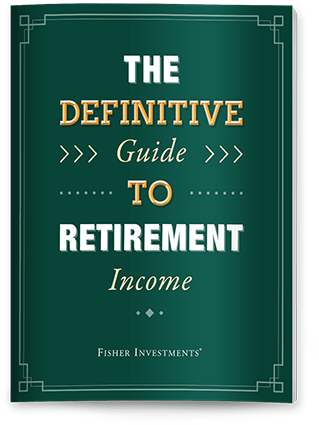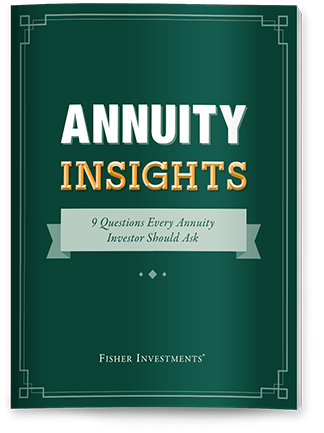Fixed Indexed Annuities
Fixed indexed annuities, or annuity contracts with a rate of return tied to a stock index such as the S&P 500, can sound like a great deal to many investors. Some offer the promise of a guaranteed return combined with the potential for added gains if the market index performs well.
That mixture of security and opportunity can be quite enticing to retirees anxious about market downturns. But there are many factors you should be aware of and carefully consider before deciding whether a fixed indexed annuity is right for you.
While fixed indexed annuities may appear appealing, with seemingly straightforward guarantees, many are very complex insurance products that were introduced in the mid-1990s to compete with the returns of certificates of deposit (CD) offered by banks.
Given the many forms they can take, you should always carefully read an annuity’s terms and thoroughly understand exactly what it is offering before deciding if it really is right for you. You should also consider whether there are any alternatives to annuities that could provide the benefits you may be looking for.
Fixed Indexed Annuities: Comfort, Fit, Value
It's no wonder that fixed indexed annuities, also known as equity-indexed annuities, have become popular. Many traditionally “safe” investments like bonds provide lower returns. Stocks offer greater potential long-term return, but higher short-term volatility. Claims of “market-like returns” with protection against potential market declines resonate with investors who may be spooked by short-term volatility.
But remember, there is a lot to consider with annuities. To determine whether a fixed indexed annuity may be right for you, it’s important to carefully consider factors such as comfort, fit and value.

See Our Investment Guides
The world of investing can seem like a giant maze. Fisher Investments has developed several informational and educational guides tackling a variety of investing topics.
Comfort
Perhaps the most common reason investors turn to annuities is the sense of comfort they believe they’ll feel from a guaranteed lifetime payment stream. While fixed indexed annuities offer returns based on stock market performance, several features that can be imposed by the insurance company in most contracts (e.g., participation rate caps, spreads or volatility controls) severely limit your investment’s potential growth. Additionally, the tax penalties for premature withdrawals and expensive surrender charges that can last a decade or more can make it difficult to exit annuities.
Fit
Another thing to consider with an annuity is the potential fit within your long-term financial plan. Some people turn to annuities to get tax-deferred growth, similar to what you can get with a 401(k) plan or an individual retirement account (IRA). Unlike 401(k)s and IRAs, there is no limit to how much you can deposit into an annuity each year. However, while deposits into an annuity can grow tax-deferred, deposits into an annuity purchased in a taxable account can’t be deducted from current taxes.
The bottom line is annuity taxation can be complicated and costly. The annuity owner faces ordinary income tax rates on any growth above the after-tax cost basis. This is often less favorable than the capital gains treatment an investor might get with investing in stocks in a taxable account.
Additionally, beneficiaries that inherit money from taxable annuities may be subject to ordinary income tax rates on the gains. This is less favorable than receiving a stepped-up cost basis enjoyed from inheriting stocks. Additionally, the death benefit from an annuity in many cases may not necessarily be passed on tax-free as with life insurance.
Value
The growth in fixed indexed annuities can fall short—well short in some cases—of investors’ expectations. This lack of growth calls into question a fixed indexed annuity’s value when compared to other types of investments.
The low growth potential results from the insurance company using a price index, not the underlying index’s total return. Insurance companies can also use crediting methods with upside limitations, effectively putting a potential “cap” on your returns. The combination of these factors often means indexed annuities provide returns closer to those of CDs over time.
The true cost of a fixed indexed annuity is opportunity cost. The chart below demonstrates the missed opportunity between what the annuity offered compared to an alternative investment, such as a market index.
Exhibit 1: Indexed Annuities' Historical Low Growth Potential
Source: FactSet as of 5/14/2024. Based on an initial investment of $100,000, S&P 500 Total Return Index, Bank of America/Merrill Lynch US Treasury 7-10-Year Index and hypothetical annuity returns, 12/31/1993 – 12/31/2023. The S&P 500 Total Return Index is a capitalization-weighted, unmanaged index that tracks the total return (inclusive of dividends) of 500 widely held US common stocks of leading companies, representative of the broad US equity market. The Bank of America Merrill Lynch US Treasury 7-10-Year Index tracks the total return inclusive of interest payments of US Treasury bonds maturing within 7 to 10 years, representative of long-term US government bond returns. Hypothetical annuity indexed to the S&P 500 Total Return Index and assumes a 1% floor, 5% cap and 100% participation rate.
Remember: There are thousands of annuities out there, each with its own set of unique features, functions, fees and more. This makes it important to thoroughly read and understand the contract of any annuity you’re considering and ask some important questions.
Some Questions You Should Ask if You’re Considering a Fixed Indexed Annuity
- Will I get lifetime payments? Most annuities offer lifetime income, whether it be from annuitizing the contract, or more commonly, through a living benefit rider. This is often just a calculation on how much of your money you can take over time. You typically have to run out of money for the guarantee to actually come into play.
- How is the fixed index return calculated? Fixed indexed annuities often pass on just a portion of the index’s returns because of their limitations on your upside. Take participation rates for example. If the index tied to your annuity was up 10% last year and you had a participation rate of 70%, you would only get 7% in our example. These products may also include caps. If your annuity has an annual cap of 5% and the index goes up 20%, even if your participation rate is 100%, you'll get no more than 5%. There are more limitations that could be associated with fixed indexed annuities. It is important to understand the nature of how the insurance company calculates interest in your specific product.
- Do dividends and interest pass through? Fixed indexed annuity returns are based on the movement of a price index, not on the market index’s total return. So, dividends—a big driver of long-term market returns—are excluded. Keep in mind that you are not investing directly in anything with these products. The index is generally just a part of the overall interest calculation created by the insurance company.
- What are its beneficiary benefits? Some annuities are structured to pass along remaining benefits to your beneficiaries, but others are not. How these benefits pass can have serious tax implications that can be complex to navigate, so you may want to hire a tax or estate planner to sort it out.
- What level of inflation protection is available? Most annuity payments remain fixed for life, so inflation can become a major issue over time. The limited growth potential often associated with indexed annuities may not even be enough to help you keep pace with inflation over the long term.
- Which features are standard and which are additional riders with associated fees? “Annuity rider” is a general term for any optional features that aren’t in the standard annuity contract. Insurance companies typically add riders for an additional charge. Many popular features in annuities are actually structured as riders (e.g., guaranteed minimum income, guarantees on a death benefit, etc.). It’s important to know what you’re getting and what you’re paying for to evaluate whether you’re being offered a reasonable price for the annuity’s protection.
These are just a few of the questions for which you should seek answers before purchasing a fixed indexed annuity. Annuities may help protect you from outliving your income, but using them simply to invest more into the stock market or protect yourself against the risk of losses can be inefficient because of their complexities and upside limitations.
It’s also important to remember that the annuity’s contract is what counts, not what you hear from the salesperson. Thoroughly read any documents you receive to make sure that what’s in the contract matches what you’ve been told.
Compare Indexed Annuities With Alternatives
Whenever you’re trying to make an apples-to-apples comparison about your investment options, you should consider the performance relative to the investment’s risk and whether or not an indexed annuity is something you can afford over the long term. Government bonds or other highly rated debt securities can potentially offer similar or superior performance compared to a fixed indexed annuity over the long term, with essentially the same risk of loss.
Stocks historically offer greater potential long-term return than bonds or annuities, though they come with higher short-term volatility. Another benefit of investing directly in the market is that you can sidestep many of the limitations associated with annuities and enjoy easier access to your assets, should you need it.
How Fisher Investments Can Help
If you own annuities, have a portfolio of $1 million or more and would like more in-depth evaluation, contact us. We have licensed Annuity Counselors that can educate you on all the pros and cons that apply to your specific annuity contract, or on any that you may be considering.
The contents of this article should not be construed as tax advice. Please contact your tax professional.






